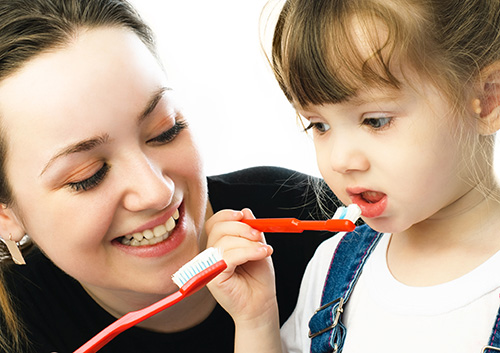February 11th, 2020

Dr. Ghenta and our team at Ghenta Dental Group believe everyone’s smile should be a something they can be proud of. Most of us aren’t born with naturally perfect teeth, though, so it’s fortunate that cosmetic dentistry and veneers make it possible to achieve the smile of your dreams!
Dental veneers are a great option to improve your smile and are highly accessible to patients around the world. They’re made of porcelain and will be customized to fit the surface of your teeth perfectly. Our team will note your tooth size, color, and shape so your veneers will look completely natural.
Benefits of dental veneers
Appearance: Dental veneers can be undetectable to others because they look so natural. One of the best perks is that they are resistant to stains, so you don’t have to worry about discoloration over time.
Improvements: Not only will your smile look better, but many minor imperfections can be improved with dental veneers as well. Chipped teeth, discoloration, and gaps will be covered by your veneers.
Durability: Veneers are made from long-lasting porcelain materials, which means they are resistant to scratches and chipping. If you take care of them properly, they can look as good as new for years!
Flexibility: Patients have the option of choosing single veneers to repair chips or cracks in teeth or go for multiple teeth to create a completely new smile.
Considerations
Just because dental veneers can cover imperfections, that doesn’t mean your oral hygiene is any less vital. Your teeth and gums should be healthy and disease-free in order to be eligible for veneers.
Set up an initial consultation at our office today, and we can address any underlying issues you may have. Your perfect smile could be just a phone call away!
February 4th, 2020

Bad breath, or halitosis, is probably not a matter of life or death. But it can make you feel self-conscious and have a negative impact on your life. The majority of people suffering from bad breath are dealing with oral bacterial. However, there are other causes of this embarrassing problem. Learning more can help you fight this solvable problem.
Five Causes of Embarrassingly Bad Breath
- Dry Mouth. A decrease in saliva flow can be caused by several things. Most often, medication or mouth breathing are the culprits. As saliva helps wash away food particles from your mouth, it prevents bad breath. Dry mouth can be dealt with by stimulating salivation.
- Gum Disease and Poor Oral Hygiene. Not brushing and flossing well enough or with enough frequency can lead to gum disease, which leads to bad breath. Halitosis can be a sign that plaque is present on your teeth.
- Food-Related Bad Breath. Food particles that aren't brushed or flossed away attract bacteria that leads to bad breath. It's especially important to brush after eating strong-smelling foods, such as garlic or onions.
- Smoking and Tobacco. Tobacco is bad for your health, and that includes your oral health. Smoking or chewing tobacco can contribute toward the development of gum disease, as well as oral cancer.
- Mouth Infections and Other Medical Problems. A mouth infection, sinus infection or even the common cold can cause you to temporarily have bad breath. Even conditions such as diabetes and reflux can cause halitosis. It's always wise to see Dr. Ghenta to help determine the cause.
We are Your Ally
Even if you maintain good oral hygiene, it's important to see Dr. Ghenta at our office to deal with or avoid problems with bad breath. We can help you uncover the cause of halitosis, while also providing solutions that allow you to enjoy fresh breath without relying on mints and breath fresheners. As is the case with all things related to oral health, we are your number-one ally when it comes to eliminating the problem of bad breath.
January 28th, 2020

When it comes to dental hygiene, “going green” is not the first phrase that comes to mind. But if you are brushing properly, you are also replacing your toothbrush every three to four months as the bristles become frayed and wear down. Sure, that’s a tiny amount of plastic from each of us going to our landfills, yet it adds up to millions of brushes a year nationally. If you are concerned about reducing your carbon footprint while reducing your risk of cavities, there are several new toothbrushes designed to make brushing more eco-friendly.
Biodegradable Toothbrushes
Some brushes claim to be completely compostable. These models generally have heads fitted with boar bristles and handles manufactured from sustainable woods or bamboo. Boar bristles aren’t for everyone. Some users complain of the taste of the bristles, and boar bristles might be harsher than the soft bristles we recommend to protect both enamel and gums. There is also some concern about bacteria growth on organic bristles.
Earth-friendly Handles and Bristles
If you prefer the consistency and texture of regular synthetic bristles, you can still opt for a brush with a handle of sustainable wood or bamboo. You can also select PBA-free bristles, bristles made primarily of castor oil, or bristles that use natural ingredients in combination with synthetics.
Reduce, Reuse, Recycle
If these exotic brushes aren’t for you, there are more conventional choices that will save energy and cut down on waste.
- Reduce the amount of electricity you use for your electric toothbrush with a model that requires less charging time.
- Reuse your toothbrush by buying one with a handle made of metal, natural materials or plastic and replace the detachable head every three months.
- Recycled plastics can be found in the handles of some toothbrushes, and many brushes come in recyclable packaging. Every bit helps!
If you decide to use one of these green products, remember that your dental health is still the primary goal. Be sure the bristles of your brush are soft enough to protect your gums and enamel and can reach all the places you need to brush. The handle should be easy to grip and the head should be a comfortable fit for your mouth. It’s always best to choose products with a seal of acceptance from your local dental association, or talk to us about greener alternatives during your next visit to our office. Luckily, there are several workable options to protect the health of your family's teeth while still being mindful of the health of our planet.
January 21st, 2020

Have you ever wondered why some people have dull and yellow teeth, while others have bright, white smiles? It’s not luck.
Everyone’s teeth naturally dull over time because of aging and the contact our teeth experience with staining foods, such as chocolate and coffee. However, teeth-whitening treatments can give you the whiter smile you’ve been after.
Get Regular Treatments
Unfortunately, the effects of teeth-whitening or bleaching treatments are only temporary, but regular treatments at Ghenta Dental Group can help keep your teeth white for much longer.
The effects of in-office bleaching can last for several months to a year, so you may prefer to repeat your use of at-home bleaching kits every few months to maintain your white teeth. Whitening toothpastes do not contain bleach and are safe to use every day.
Have Realistic Expectations
Not everyone’s teeth can be turned bright white. Some just don’t respond to whitening treatments. If your teeth are a light yellowish color, they may readily respond to teeth-whitening procedures, but bleach will not likely work on grayish teeth. Brownish teeth tend to fall somewhere in between.
Practice Good Oral Hygiene
For the best whitening results, it’s necessary to keep your teeth in good health. Visible fillings, implants, or bridges that are metallic stand out against the white color you’ll want to achieve.
Maintaining good oral hygiene will help you avoid tooth decay and keep your smile bright. In addition to brushing your teeth twice a day, these actions can help promote a healthy mouth:
- Floss every day
- Visit our office every six months for professional cleanings
- Rinse your mouth with water after each meal and snack
- Limit sugary and starchy foods and beverages that can stain teeth, especially between meals






 Website Powered by Sesame 24-7™
Website Powered by Sesame 24-7™